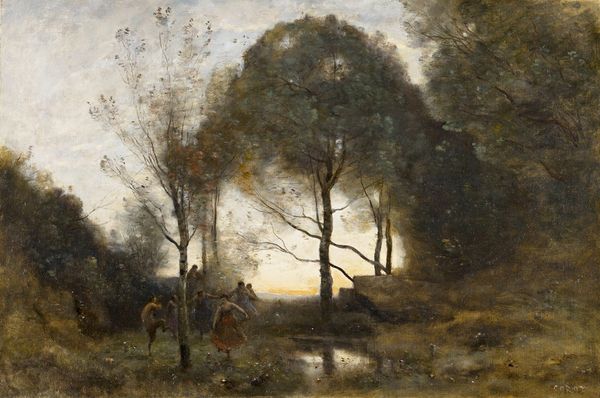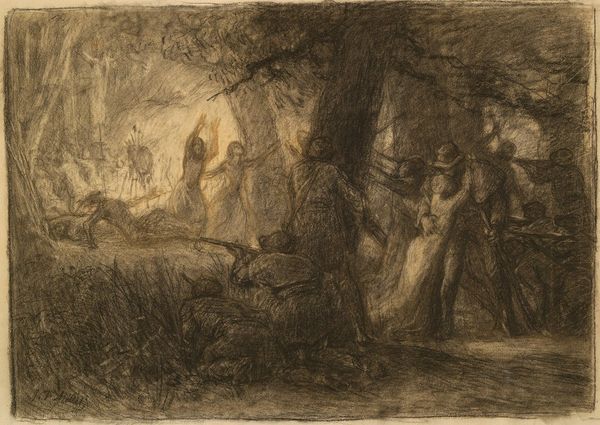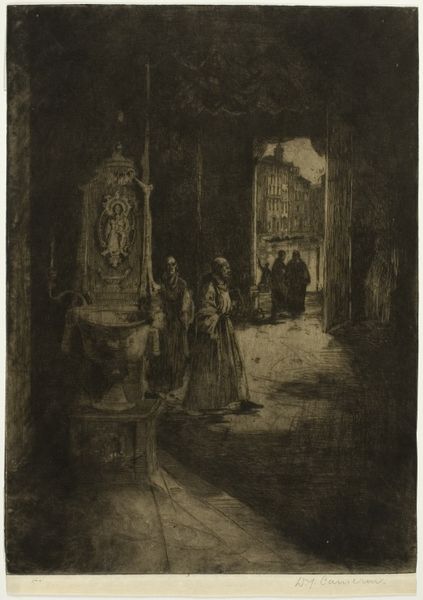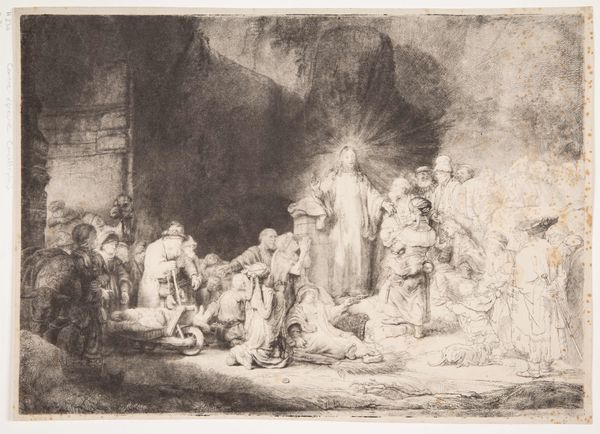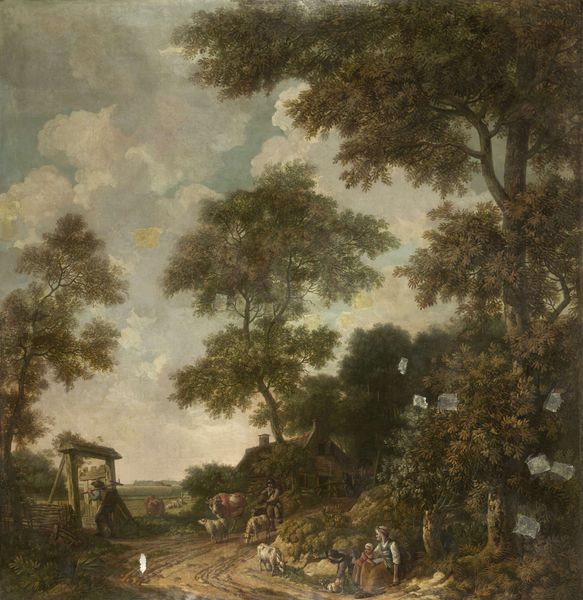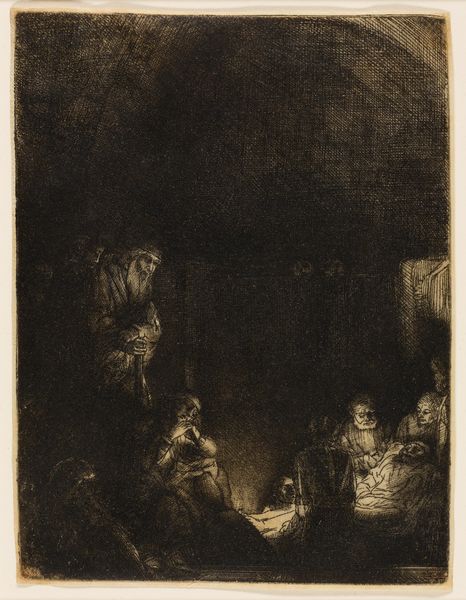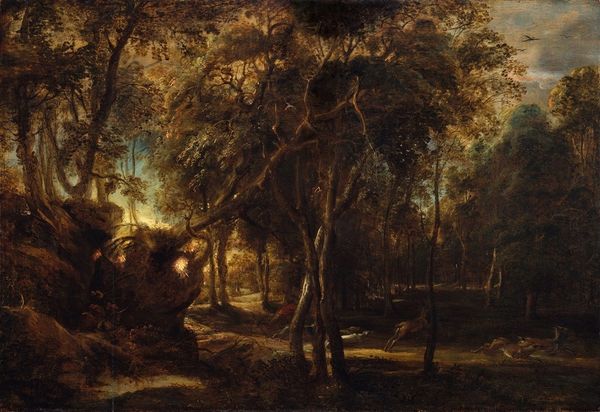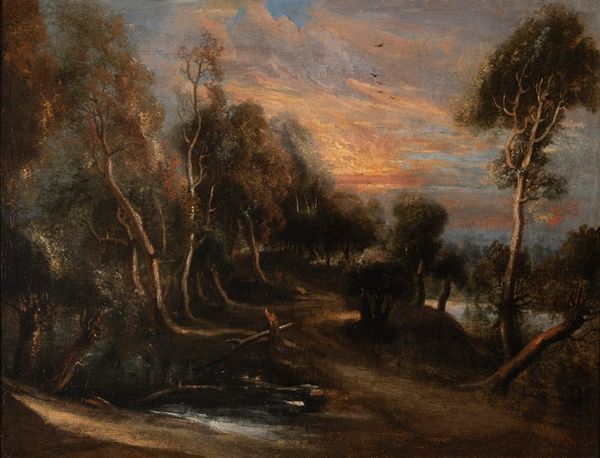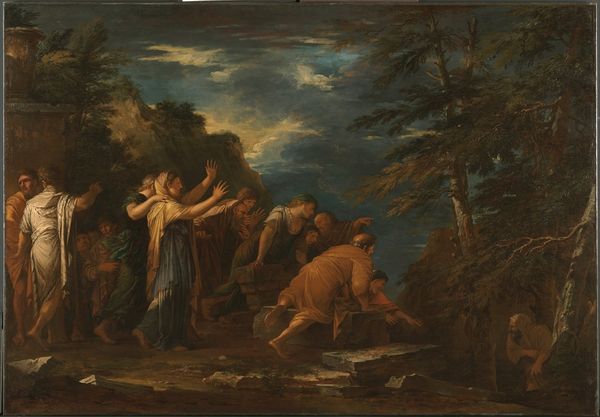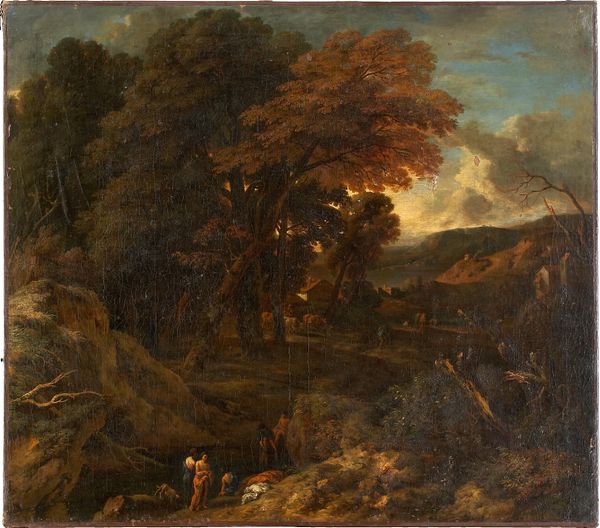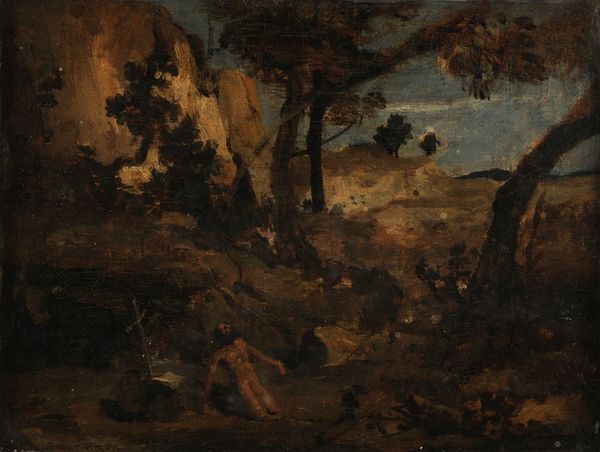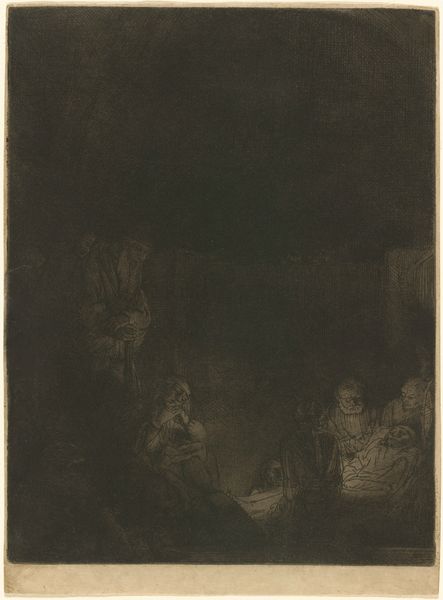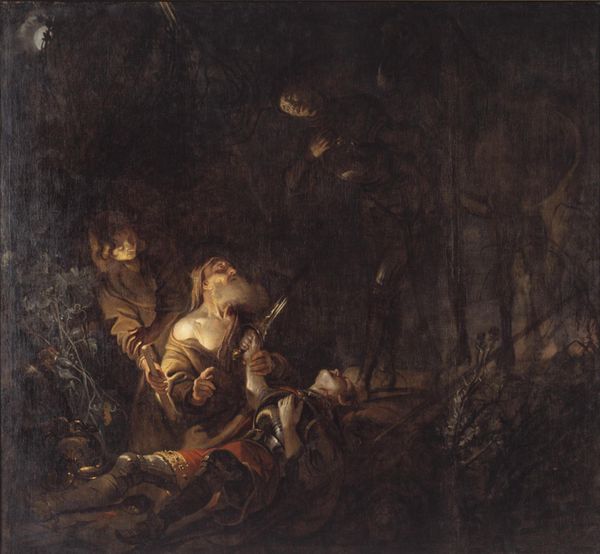
Dimensions: 17 × 21 7/8 in. (43 × 55.5 cm)
Copyright: Public Domain
Editor: Monticelli’s *Fête d'Après-Midi*, created around 1880 using oil paint, is captivating. The impasto technique gives it such a textured, almost dreamlike quality. What symbols do you notice at play within this scene, beyond it just representing a gathering? Curator: Indeed, the heavy impasto lends a feeling of swirling emotions and veiled meaning. Notice how the figures are positioned in relation to the light flooding from that arched doorway. It reminds me of stagecraft, and classical notions of entry and exit. This 'threshold' moment may evoke transitions in our own lives: innocence and experience; waking and dreaming; entrance or departure. How do their postures and garbs trigger historical archetypes, perhaps theatrical characters, for you? Editor: That's interesting, like figures in a morality play of some kind. They are not realistically portrayed individuals, right? It's more about conveying an impression. Curator: Precisely! Monticelli wasn't aiming for portraiture but, rather, accessing collective memories of festive gatherings—of power, ritual, and society. Observe the colour choices. Why those earthy browns, those subdued golds? Colour symbolism in art carries cultural memory, does it not? What significance may darkness play, relative to light, and what emerges out of that background and illumination? Editor: It's become so much more than a "party after noon." Now I’m seeing these symbolic gateways and echoes of performances across time. It is almost intimidating in this light! Curator: Ultimately, *Fête d'Après-Midi* invites us to find fragments of our past within its swirling forms. Even now.
Comments
No comments
Be the first to comment and join the conversation on the ultimate creative platform.

